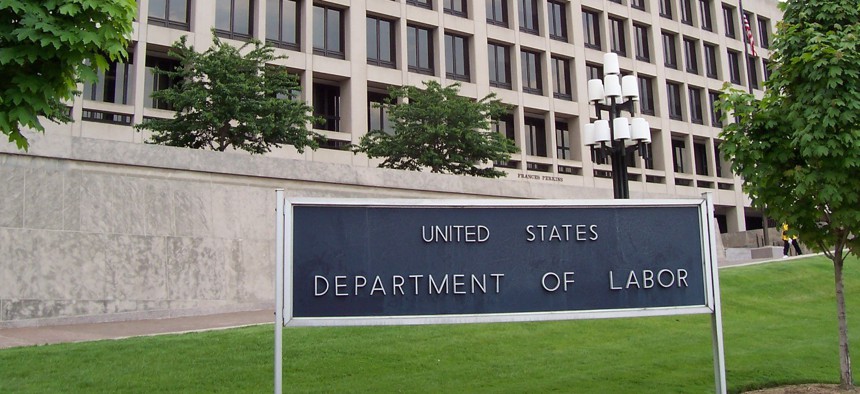Labor Dept. Pilot Taps State Data for a New Look at Who is Getting Unemployment Benefits

U.S. government photo
Data on access to unemployment insurance broken down by demographics can help program administrators make sure that they help everyone entitled to the benefit access it, the Labor Department says.
The Department of Labor is launching a pilot program to use data to better understand and remedy gaps in access to the unemployment insurance system.
The effort is part of the Labor Department's recently released equity action plan.
The pilot uses disaggregated state-level data for the first time at the federal level to offer a new look at who is getting shut out of unemployment benefits.
It "tends to be workers of color, workers with low levels of education, younger workers, low-paid workers who tend to have trouble accessing the UI system in a timely way," said Alexander Hertel-Fernandez, Deputy Assistant Secretary for Research and Evaluation in the Office of the Assistant Secretary for Policy at the Department of Labor.
Before the pandemic, unemployed Black workers were 21% less likely to get benefits than their white counterparts, according to the Labor Department's equity plan. There was also a gap in regards to education level, with 30% of unemployed workers with college degrees receiving benefits in 2018, compared to 11% of those with less than a high school diploma.
The department's equity plan cites difficult application and certification processes, claims backlogs and identity verification systems that flag certain people more than others—people of color and those who've changed names or gender identification, in particular—as issues in the unemployment system.
During the pandemic, "a lack of real-time data on who had access to the UI system and who did not" has been an issue, said Hertel-Fernandez.
This "lack of disaggregated data on program access by demographic characteristics prevents regular equity tracking that could promote accountability and inform changes to program laws and administration," he said. This pilot is going to give the Labor Department access to administrative data it hasn't traditionally had, said Hertel-Fernandez.
The end goal is to create "indicators" of program access to identify gaps. This will include measures like "application, recipiency, denial, and timeliness rates broken out by demographic groups (especially race, ethnicity, education, age, gender, disability status, geographic area, and language proficiency)," the department's equity plan states.
States will get summary statistics that show these key measurements over time, but also open-source code and documentation so that they can continue this work in the future, said Hertel-Fernandez.
The Labor Department is planning on releasing "initial results" from the pilot this summer, and it wants to recruit more states in 2022 and 2023, according to the department's equity plan.
Currently, the Labor Department is finalizing data sharing partnerships with five states (the names aren't yet public since those agreements aren't yet finalized), said Hertel-Fernandez.
The states will play a key role in defining what research topics they dig into during the pilot. Some might focus on rural populations and internet access, said Hertel-Fernandez, while others language access.
The data that states have access to will also play a role in determining the specifics of the projects.
The work "is going to be slightly different for each of the states that we work with because each of the states maintains their data in a slightly different format," said Hertel-Fernandez.
Currently, state laws and rules play a large role in dictating what information states collect and how in the unemployment system, said Anneliese Goger, a fellow at Brookings whose current research focuses on digital transformation in labor and education data systems. She recommended the creation of national data standards and sharing in a 2021 report on the subject.
Technology systems also differ among states. Whether states outsource their data systems to contractors, and the specifics of their procurements if they do contract, can also affect the level of control they have over their own data, said Goger.
"On every level it's different in every state, in terms of what data they collect, what forms they use, how the infrastructure is set up, what kind of technology they have, whether it's cloud-based or a COBOL server. It's really all over the map," she said.
For the new pilot, for example, the Labor Department is going to have access to historical data in some states, but not all.
In some states "that historical perspective isn't necessarily possible because of the way that the data has been stored in the past – for instance, the data switched vendors or may have switched the way that they have managed the data in the past," said Hertel-Fernandez.
The end goal for the pilot is that after states have these indicators, they can spot "red flags" when access issues emerge and use that information to change program administration and fix the problem.
The Labor Department will also be announcing a new funding opportunity in the next months to fund an academic institution or network to do research on equity in the unemployment system, said Hertel-Fernandez.
NEXT STORY: How One State Measures Post-pandemic Recovery






